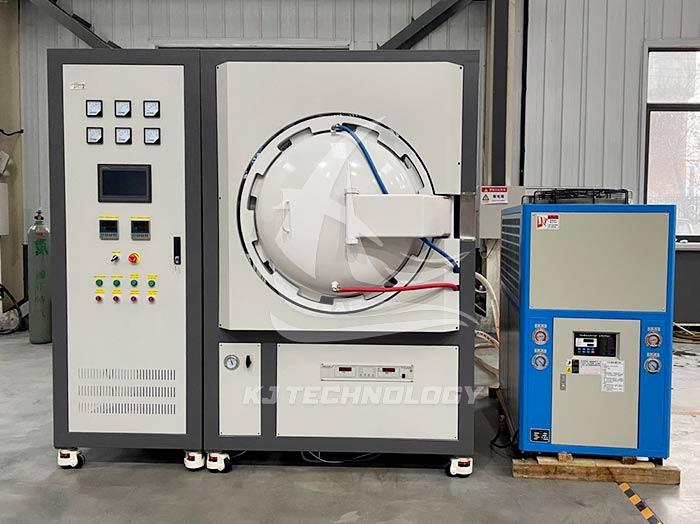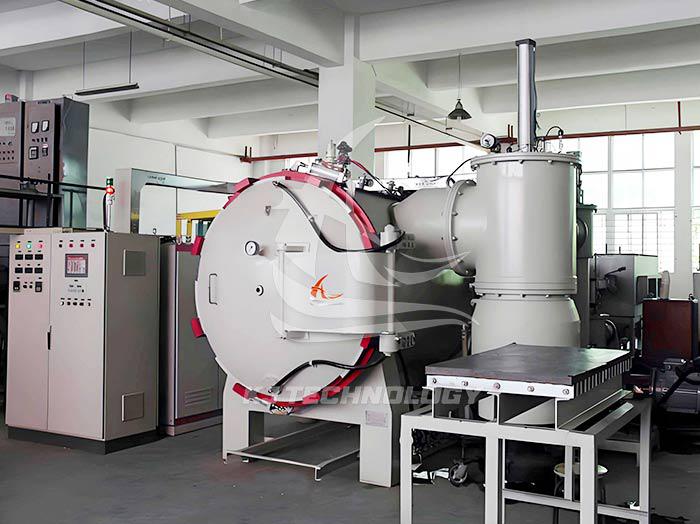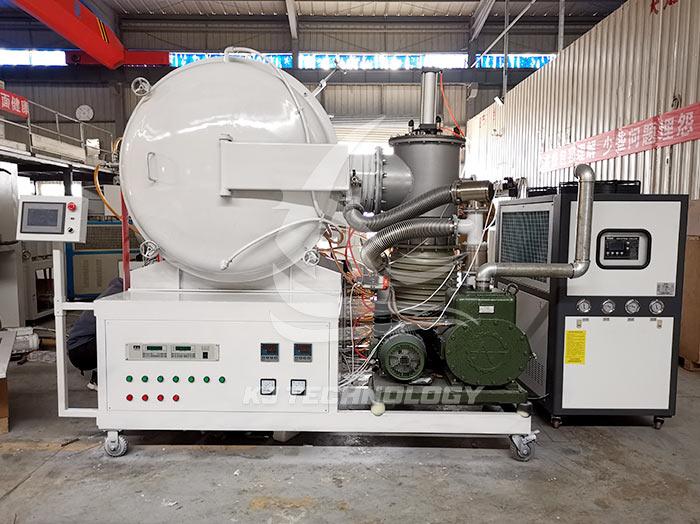What are the application scenarios of laboratory vacuum furnaces?
 06-26-2025 Author: KJ technology
06-26-2025 Author: KJ technology
Laboratory vacuum furnaces play an irreplaceable role in material research and development, high-end manufacturing, and cutting-edge scientific fields by precisely controlling the atmosphere, temperature, and pressure. The following are the classification and typical cases of its core application scenarios:
1. Material Heat Treatment and Performance Optimization
a. Metal materials
Annealing of high-temperature alloys:
Scenario: Vacuum annealing of aircraft engine blades (such as Inconel 718) to eliminate machining stress.
Advantages: Avoiding the formation of oxide layer, increasing tensile strength by 10% -15%, and extending fatigue life by 3 times.
Surface modification of titanium alloy:
Scenario: Surface nitriding treatment of medical titanium alloy implants to improve biocompatibility and wear resistance.
Process: Vacuum+N ₂ atmosphere, temperature 800 ℃, controllable nitride layer thickness to 1-5 μ m.
b. Ceramic materials
High purity alumina sintering:
Scenario: Densification sintering of electronic ceramic substrates (such as Al ₂ O ∝).
Effect: Vacuum environment can reduce sintering temperature by 200 ℃, porosity<0.1%, and dielectric loss by 40%.
Preparation of silicon nitride ceramics:
Scenario: Vacuum hot pressing sintering of cutting tool materials.
Advantages: Hardness up to HV1800, fracture toughness increased to 8 MPa · m ¹/², and service life increased by 5 times.
2. Preparation of Semiconductor and Electronic Materials
a. Compound semiconductor growth
GaN epitaxial growth:
Scenario: GaN epitaxial layer deposition in LED chip manufacturing.
Process: Vacuum+NH3+TMGa (trimethyl gallium), temperature 1000 ℃, pressure 100 Torr.
Result: The dislocation density of epitaxial layers is less than 10 ⁸ cm ⁻ ², and the luminous efficiency is improved by 30%.
b. Thin film deposition and doping
Preparation of alumina film:
Scenario: High dielectric constant (High-k) dielectric layers in integrated circuits.
Process: Vacuum ALD (Atomic Layer Deposition), temperature 300 ℃, Al ₂ O ∝ thin film thickness accuracy ± 0.1 nm.
Doping of silicon-based materials:
Scenario: Treatment of n-type silicon doped with phosphorus (P) for solar cells.
Advantages: The vacuum environment allows for precise control of doping concentration (10 ¹⁵ -10 ¹⁹ cm ⁻³), resulting in a 5% increase in photoelectric conversion efficiency.
3. Development of new energy materials
a. Lithium ion battery materials
Silicon based negative electrode carbon coating:
Scenario: Enhancing the cycling stability of silicon anode materials.
Process: Vacuum+CH ₄ atmosphere, temperature 800 ℃, carbon coating thickness 2-5 nm.
Effect: The Coulomb efficiency increased from 70% to 90% for the first time, and the capacity retention rate was>85% after 100 cycles.
Solid state electrolyte sintering:
Scenario: Preparation of LLZO (lithium lanthanum zirconium oxygen) electrolyte for all solid state lithium batteries.
Advantages: Vacuum sintering can suppress Li volatilization, and the ion conductivity can reach 10 ⁻ S/cm, which is 2 orders of magnitude higher than traditional methods.
b. Fuel cell materials
Proton exchange membrane modification:
Scenario: Fluorination treatment of Nafion membrane to improve chemical stability.
Process: Vacuum+CF ₄ plasma, temperature 150 ℃, controllable fluorination depth up to 10% film thickness.
4. Nanomaterials and Advanced Functional Materials
a. Synthesis of nanoparticles
Preparation of quantum dots:
Scenario: Size controlled synthesis of CdSe quantum dots.
Process: Vacuum+Organic Metal Precursor Pyrolysis, Temperature 300 ℃, Size Distribution<5%.
Application: Quantum yield>90%, used for high-resolution displays and biological imaging.
b. Preparation of two-dimensional materials
Graphene growth:
Scenario: CVD method for growing single-layer graphene on copper foil.
Process: Vacuum+CH ₄+H ₂ atmosphere, temperature 1000 ℃, growth rate 1 μ m/min.
Performance: Mobility>10 ⁴ cm ²/V · s, used for high-speed transistors and transparent conductive films.
5. Biomedical Materials and 3D Printing
a. Biomaterial modification
Hydroxyapatite coating:
Scenario: Preparation of bioactive coatings for titanium alloy implants.
Process: Vacuum plasma spraying, temperature 1500 ℃, coating bonding strength>50 MPa.
b. Post processing of 3D printed metal parts
Stress relief for titanium alloy 3D printed parts:
Scenario: Vacuum heat treatment of aerospace components.
Effect: Eliminate residual stress in printing, achieve dimensional accuracy<± 0.05 mm, and increase fatigue strength by 20%.
6. Research on Special Materials and Extreme Conditions
a. Preparation of Superconducting Materials
YBCO superconducting thin film:
Scenario: Preparation of high-temperature superconducting magnets.
Process: Vacuum+pulsed laser deposition (PLD), temperature 800 ℃, critical current density>1 MA/cm ².
b. Nuclear material handling
Purification of uranium alloy:
Scenario: Vacuum distillation purification of nuclear fuel rods.
Advantages: Impurity content<1 ppm, meeting nuclear safety standards.
7. Summary and Trends
Technological Trends:
Multi field coupling: Combining multiple physical fields such as vacuum, magnetic field, and plasma to achieve precise control of material properties.
In situ characterization: Integrated XRD, SEM and other equipment for real-time monitoring of material structure evolution.
Industry demand:
New energy: The demand for solid-state batteries and hydrogen energy materials for vacuum furnaces has surged.
Aerospace: The research and development of high-temperature alloys and ceramic based composite materials promote the upgrading of vacuum furnace technology.
The laboratory vacuum furnace has become a fundamental tool for materials science research, and the expansion of its application scenarios and technological iteration will continue to drive the development of high-end manufacturing and cutting-edge technology.








